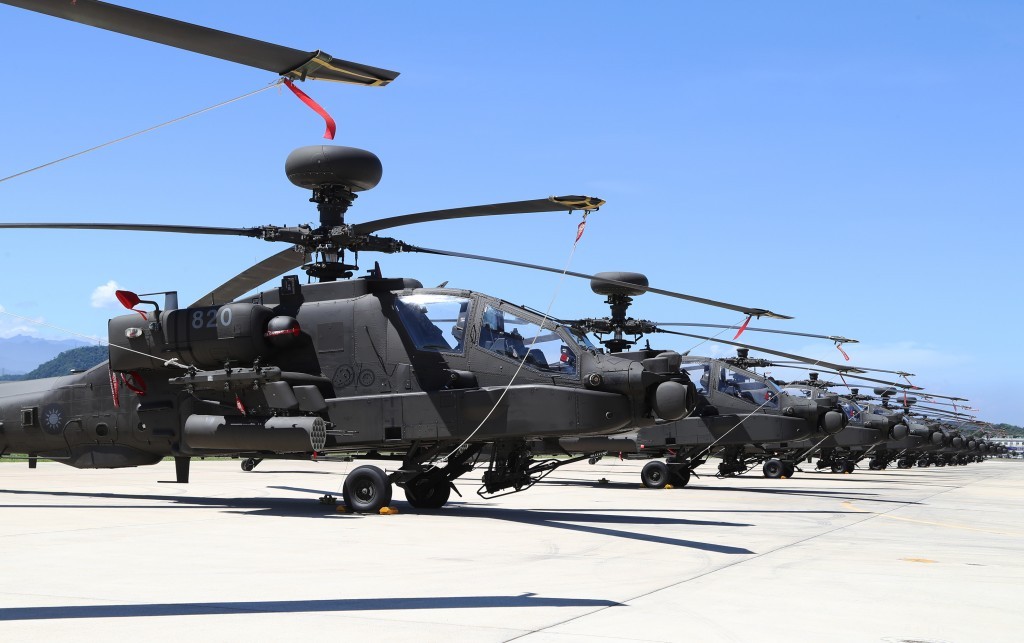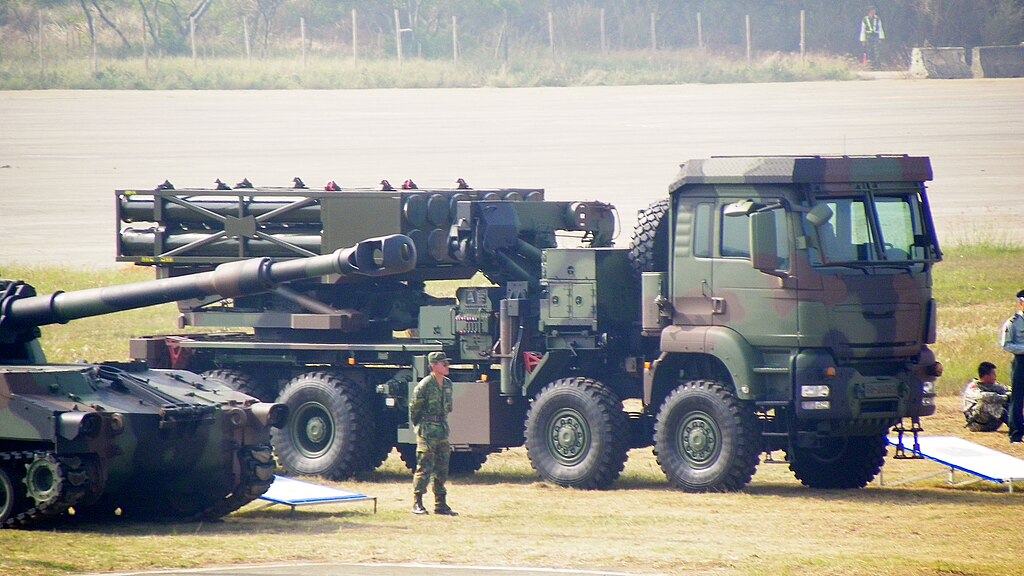Facing rising threats and persistent air and naval maneuvers from China, Taiwan will hold a series of rare live-fire military drills in March and August in southern Taiwan’s Pingtung region. The aim is to thwart incoming Chinese People’s Liberation Army Navy (PLAN) and Marines landing in amphibious landing ships.
China has long practiced and rehearsed sea-to-shore landing operations involving troops and tanks. This can happen if an encirclement, blockade, and precision strikes on some of its military bases do not force the Taiwanese to capitulate to pressure.
With Taiwan hiking its defense spend, developing a series of indigenous drones and missile systems, and signing defense deals and military ties with the US, chances are that Taipei would resist and put up a fight. The election of new President Lai Ching-te, whom the People’s Republic of China (PRC) views as “separatist,” would also be a major driving factor for the Chinese attack.
Recent reports said that US special forces have been permanently stationed for the first time in Taiwan, which Taiwan’s Ministry of National Defense (MND) said would help develop “comprehensive training and institutionalized capabilities.”
These are the Special Operations Forces Liaison Element (SOFLE), which includes US Army Green Berets from the 1st Special Forces Group, 2nd Battalion, Alpha Company, that have been stationed with Taiwan’s 101st Amphibious Reconnaissance Battalion in Kinmen and Penghu islands. Interestingly, Kinmen is just 10 km off the Chinese coastal city of Xiamen, which makes it one of the provocative US military moves from China’s perspective.

Exercise Components
According to the Taipei Times, the live-fire missile drills would cover the “sea and airspace” around Pingtung County. Flight and navigation restrictions have been declared in and above the waters west of the county off Jiupeng Desert and east of the county off Fangshan Township.
To be held from March 25 to April 19 and from August 26 to 28, reports from the island say they “appear to revolve around” the Jiupeng Military Base in Pingtung’s Manchu Township. “Previous exercises, the headquarters and locations named in the warning would suggest that AH-64 helicopter gunships, Thunderbolt-2000 multi-launch rocket systems, Stinger air defense missile systems, and TOW anti-tank guided missile systems would be involved in the drills,” the report said.
Apache gunships are expected to launch Hellfire missiles at ocean targets from March 25 to March 29 and on April 11 during the Divine Eagle exercises. The indigenously developed Thunderbolt-2000 rocket artillery systems would likely fire at ocean targets on April 9 and April 18 during the Thunderbolt exercise, a military drill that shares the name with the Multiple Launch Rocket System (MLRS).
The ‘Divine Bow’ phase would likely involve Stinger missile systems and consist of a “tracking phase” on April 1 and April 2, followed by a “launching phase” six days later. TOW anti-tank guided missile systems are expected to fire at ocean targets from August 26 to 28 during the ‘Sky Horse’ exercise. This is the only portion of the drills that would affect the waters off Fangshan.
Taiwan’s Military Thinking
Taiwan has long sought large anti-tank guided missiles (ATMG) like the Javelin that can rain down fire on approaching Chinese Type 05 (or the ZBD-05/ZTD-05) amphibious assault tanks. It would also have to counter the Chinese Type 075 Landing Helicopter Dock (LHD) amphibious assault carriers and its civilian roll-on/roll-over (RoRo) that would release troops, vehicles, and armor on Taiwan’s west and east coasts, respectively.

The nature of the exercises the Republic of China (RoC) military is conducting shows that it perceives fixed and heavy beach defenses, covered by attack helicopters, tanks, and artillery long enough for external support to arrive and reinforce it. This means a possible US intervention.
Ben Lewis, a leading PLA and the Taiwanese military expert, said that these exercises were an “effective way” for Taiwan to practice its “missile capabilities.” “The extended scope of the exercises in 2024 indicates that Taiwan is adapting to the threat posed by China, which is a good sign.
The PLA continues to develop and employ new capabilities that represent significant challenges for Taiwan, but I think the diversity of platforms being used in this year’s missile exercises is evidence that Taiwan has many tools to overcome these challenges,” Lewis said while speaking to the EurAsian Times.
Thunderbolt-2000 MLRS
Taiwan’s indigenously developed Thunderbolt-2000 MLRS, a product of the National Chung Shan Institute of Science and Technology (NCSIST), has a self-reload crane and can be mounted on the back of a high-mobility 8×8 cargo truck.
The launcher can be equipped with pods of unguided surface-to-surface rockets, and the sealed rocket pod’s design enables rapid reloading while lowering maintenance and storage requirements. Also called the Ray-Ting (RT) 2000, it entered service in late-2012.

It can fire three types of rockets, the Mk15, Mk30, and Mk45, with a maximum range of 15 km, 30 km, and 45 km, respectively. It can reach the mainland Chinese province of Fujian from Taiwan’s forward defense outposts of Kinmen and Matsu islands.
All three rocket types are powered by solid propellant motors and equipped with four fins for in-flight stabilization. They have a circular error probability of less than 1% and are armed with a high-explosive warhead or submunition.
Of these, the Mk15 is a 117-mm rocket that is believed to carry 6400 6.4-mm steel balls. The system can take a total of 60 rounds of Mk15 rockets in three pods. While the Mk30 is a 180-mm rocket that can carry either M77 dual-purpose improved conventional munitions (DPICM) bomblets or 8-mm steel balls, the RT-2000 uses 27 rounds of Mk30 180-mm rockets in three pods, each housing nine rounds.
The Mk45 is a 227-mm rocket that can also carry either M77 bomblets or 8-mm steel balls, and the system uses 12 rounds in two pods. The Mk45, therefore, would be most suited to hit PLAN warships and amphibious craft approaching Taiwanese shores.
It may be pointed out that one such system exploded during a military exercise in Pingtung County – the same region where the upcoming exercises are going to be held – on June 20, 2022.
- The author can be reached at satamp@gmail.com
- Follow EurAsian Times on Google News




